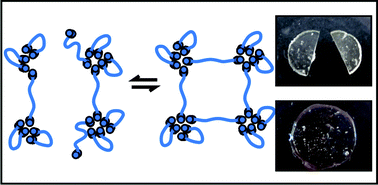Dynamic supramolecular poly(isobutylene)s for self-healing materials†
Abstract
Mono- and bifunctional supramolecular poly(isobutylene)s (PIBs) bearing hydrogen-bonding motifs (barbituric acid or a Hamilton wedge) are prepared by a combination of living carbocationic

- This article is part of the themed collection: Supramolecular and dynamic covalent polymers

 Please wait while we load your content...
Please wait while we load your content...